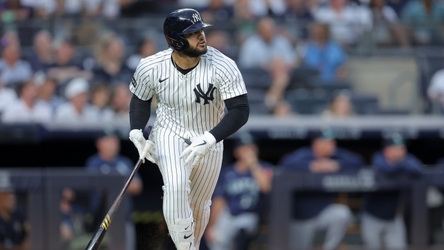A few thoughts about the Celtics as they return from Brooklyn with a winning record for the first time this season …
⋅ This is sure to change, but fairly interesting for now. Here are the Celtics’ leading 3-point shooters by percentage this season with a minimum of 10 attempts: Baylor Scheierman (52.9 percent), Hugo Gonzalez (50), Jordan Walsh (41.2), Anfernee Simons (40.4), Josh Minott (38.1), and Luka Garza (38.1).
Now, aside from Simons, the players on that list are mostly low-volume shooters. Nevertheless, it seems notable that Jaylen Brown (34.9), Payton Pritchard (33.1), Sam Hauser (33.3), and Derrick White (30.5) are shooting below their career averages from long range, some by quite a bit.
This might be partly due to the absence of Jayson Tatum, who draws so much attention from opposing defenses that it creates better looks for secondary options. But it is probably primarily just the result of bad early shooting luck, which should bode well for the Celtics.
Get Starting Point
Pritchard, for example, has emerged from his slump and is 18 for 35 on 3-pointers over the last three games, all wins.
“I just went through a little rut there,” Pritchard said after Tuesday’s victory over the Nets. “Sometimes great shooters start to overcomplicate their shot. ‘I want to tuck my wrist more. How do I get it to be even more consistent?’ Rather than just going to basics and just one motion, one motion, one motion.”
⋅ Unlike Brown, White, and even Pritchard, Hauser is viewed primarily as a 3-point specialist. He has never shot below 40 percent from long range over a full season, including in college.
But in the critical fourth quarter of Tuesday’s win he had a substantial impact while making just one shot. He played all but 18 seconds of the period and registered 5 rebounds, 3 assists, and 2 steals, while even being tasked with applying full-court pressure defense.
“Just be a basketball player, I guess, at the end of the day,” Hauser said. “You might be here for a specific trait, and you might be really good at it, but how can you impact your team in a different way when that trait is not up to its normal standard?”
I had to read that quote twice to make sure it was not from coach Joe Mazzulla, because it sounded exactly like something he might say. Mazzulla is doing all he can to get this group to buy into this unusual season.
Hauser played just seven minutes in last Sunday’s win over the Clippers, and on Tuesday he turned into a key finisher. He acknowledged that the inconsistency has presented challenges, but he said he is focused on being “external and not internal,” meaning the team rather than himself.
“It’s going to be a lot of that this year, I feel like,” Hauser said, “changing lineups, rotations, and figuring out what works.”
This unclear bench hierarchy has ensured that everybody is prepared for anything.
⋅ Earlier this season, Mazzulla cautioned the media not to read into starting lineup choices, because he intended to use many different ones. Sure enough, he deployed three different starting groups over the first four games.
Then he appeared to settle on one, with Minott joining regulars Brown, White, Pritchard, and Neemias Queta for nine games in a row.
But over the last three games, Walsh has been inserted in place of Minott, and the returns have generally been encouraging. Walsh is a pesky defender and has mostly been tasked with guarding the opponent’s top offensive weapon whenever he is on the floor.
The lineup featuring Walsh has outscored opponents by 31.8 points per 100 possessions. But just 74 seconds into the third quarter on Tuesday, Walsh surrendered positioning to Nets forward Michael Porter Jr., gave up an offensive rebound, and committed a foul before being instantly replaced by Minott.
⋅ Speaking of net ratings, 17 Celtics two-man pairings have played at least 150 minutes together this season, and Queta is the common thread among the most successful ones. He owns a plus-22.4 net rating when paired with Pritchard, followed by plus-17.6 with White, plus-15.5 with Brown, and plus 14.1 with Minott. To put those sparkling figures in perspective, there is not another pairing with a positive double-digit rating.
Adam Himmelsbach can be reached at [email protected]. Follow him @adamhimmelsbach.











